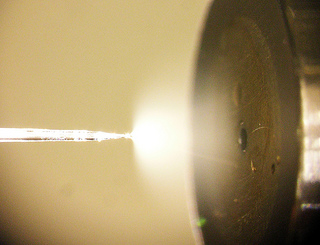Question:
How Mass Spectrometry Helps in Protein Identification?
The Protein Man Says:
There are a lot of ways by which protein identification and research can be aided by mass spectrometry. Consider the following:
Mass spectrometry can be used for relative quantitative proteomics: By using mass spectrometry, you do not only identify the types of proteins available in a certain sample. You also get to quantify the levels of relative proteins in the sample in a cheaper, faster and more accurate manner. While you can use it in a stand-alone manner, using it in combination with transcriptomics (The global study of gene expression at the RNA level) will definitely yield more functional information.
 It can help in the identification of protein binding partners: Mass spectrometry can help identify the specific proteome for protein-protein interactions.
It can help in the identification of protein binding partners: Mass spectrometry can help identify the specific proteome for protein-protein interactions.
It can shed light on signal transduction pathways: Mass spectrometry can help you follow specific signal transduction pathways resulting from multiple signals and time-points without actually having to resort to running multiple western blots to do it.
It can help map out protein post translational modifications: By using mass spectrometry, you can identify and localize any modifications in your protein sample. You can pinpoint with great accuracy where your protein has been modified and identify the nature of modification as well.
It can help characterize your purified protein sample: Mass spectrometry also comes in quite handy in analyzing intact purified proteins in combination with its digested version when expressing and purifying proteins for functional and biochemical assays. In such cases, mass spectrometry can help ensure that the sequence is correct and that the modifications are in the right locations. Additionally, it can also help identify impurities in your preparation.
Mass spectrometry can help discover biomarkers: Biomarker discovery and quantification is one of the most important yet most difficult applications of proteomics. However, with the use of mass spectrometry, selective monitoring of differentiating proteins can be very much possible. As such, it may improve your chances of finding a biomarker for a particular disease, drug efficacy or drug toxicity.
Moreover, mass spectrometry can also identify drug targets from phenotype-based screens, quantify proteins for which there is no antibody and provide access to proteins in most subcellular compartments.






